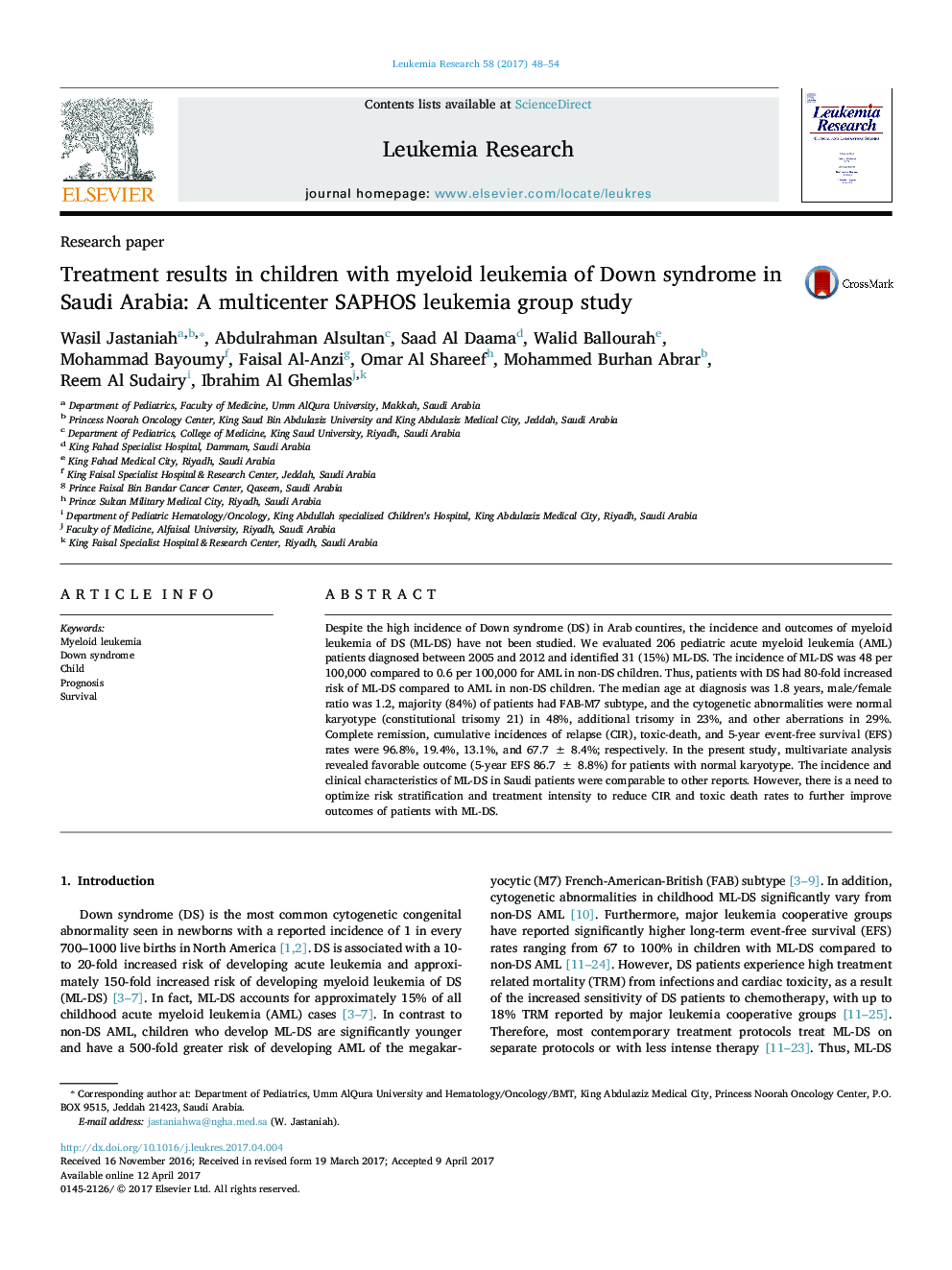| Article ID | Journal | Published Year | Pages | File Type |
|---|---|---|---|---|
| 5527781 | Leukemia Research | 2017 | 7 Pages |
â¢The incidence of myeloid leukemia of DS (ML-DS) in Saudi Arabia was 48 per 100,000.â¢Clinical and laboratory characteristics of ML-DS were comparable to other reports.â¢Treatment outcomes varied based on associated cytogenetic abnormalities.â¢Optimizing risk stratification and treatment intensity is warranted in ML-DS.
Despite the high incidence of Down syndrome (DS) in Arab countires, the incidence and outcomes of myeloid leukemia of DS (ML-DS) have not been studied. We evaluated 206 pediatric acute myeloid leukemia (AML) patients diagnosed between 2005 and 2012 and identified 31 (15%) ML-DS. The incidence of ML-DS was 48 per 100,000 compared to 0.6 per 100,000 for AML in non-DS children. Thus, patients with DS had 80-fold increased risk of ML-DS compared to AML in non-DS children. The median age at diagnosis was 1.8 years, male/female ratio was 1.2, majority (84%) of patients had FAB-M7 subtype, and the cytogenetic abnormalities were normal karyotype (constitutional trisomy 21) in 48%, additional trisomy in 23%, and other aberrations in 29%. Complete remission, cumulative incidences of relapse (CIR), toxic-death, and 5-year event-free survival (EFS) rates were 96.8%, 19.4%, 13.1%, and 67.7 ± 8.4%; respectively. In the present study, multivariate analysis revealed favorable outcome (5-year EFS 86.7 ± 8.8%) for patients with normal karyotype. The incidence and clinical characteristics of ML-DS in Saudi patients were comparable to other reports. However, there is a need to optimize risk stratification and treatment intensity to reduce CIR and toxic death rates to further improve outcomes of patients with ML-DS.
